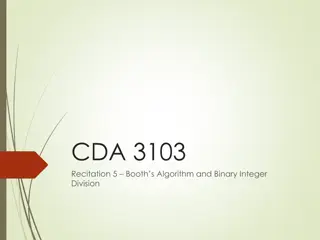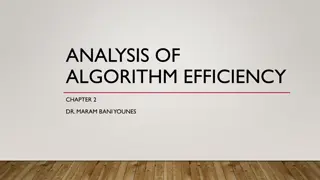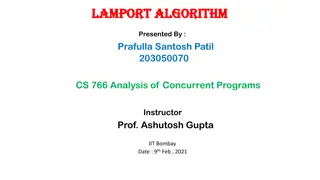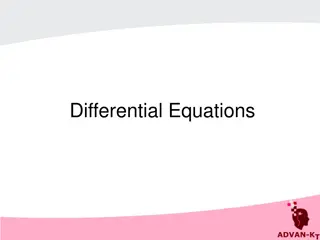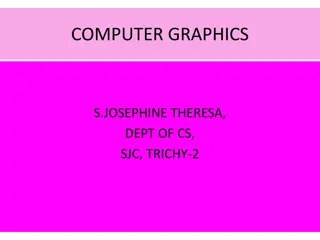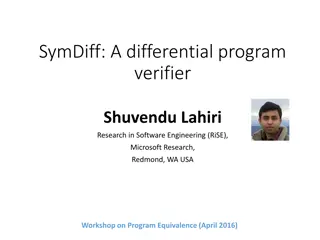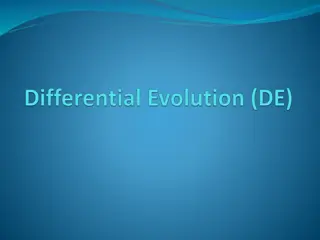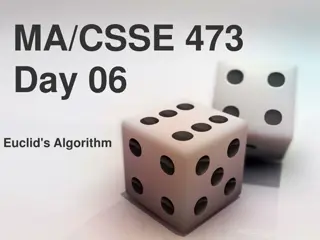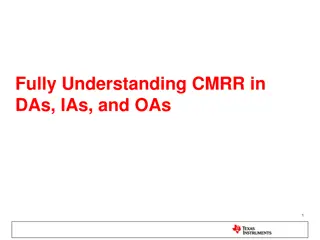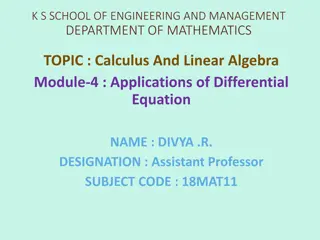Introduction to Differential Evolution Metaheuristic Algorithm
Differential Evolution (DE) is a vector-based metaheuristic algorithm known for its good convergence properties. Developed by Storn and Price in the late 1990s, DE operates on real numbers as solution strings, making encoding and decoding unnecessary. This algorithm utilizes vectors for mutation and crossover operations, with explicit updating equations. DE consists of key steps such as mutation, crossover, and selection, all carried out over vector components. For further details and variations of DE, refer to the comprehensive coverage in the book "Nature-Inspired Optimization Algorithms" by Xin-She Yang.
Download Presentation

Please find below an Image/Link to download the presentation.
The content on the website is provided AS IS for your information and personal use only. It may not be sold, licensed, or shared on other websites without obtaining consent from the author.If you encounter any issues during the download, it is possible that the publisher has removed the file from their server.
You are allowed to download the files provided on this website for personal or commercial use, subject to the condition that they are used lawfully. All files are the property of their respective owners.
The content on the website is provided AS IS for your information and personal use only. It may not be sold, licensed, or shared on other websites without obtaining consent from the author.
E N D
Presentation Transcript
6 Differential Evolution Xin-She Yang, Nature-Inspired Optimization Algorithms, Elsevier, 2014.
Differential evolution (DE) is a vector-based metaheuristic algorithm that has good convergence properties. This chapter provides a brief introduction to the basic differential evolution and its main implementation details and variants.
6.1 Introduction Differential evolution, or DE, was developed in R. Storn and K. Price in their nominal papers in 1996 and 1997 [7,8]. DE is a vector-based metaheuristic algorithm, which has some similarity to pattern search and genetic algorithms due to its use of crossover and mutation with explicit updating equations. DE uses real numbers as solution strings, so no encoding and decoding is needed.
Differential evolution carries out operations over each component. Almost everything is done in terms of vectors. Mutation: A difference vector of two randomly chosen population vectors is used to perturb an existing vector. Crossover: A vector-based, component-wise exchange of chromosomes or vector segments. Explicit updating equations.
Differential evolution consists of three main steps: mutation, crossover, and selection.
Ke-Lin Du and M.N.S. Swamy, Search and Optimization by Metaheuristics - Techniques and Algorithms Inspired by Nature, Springer, 2016.



